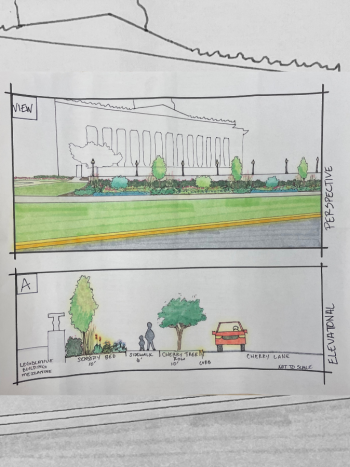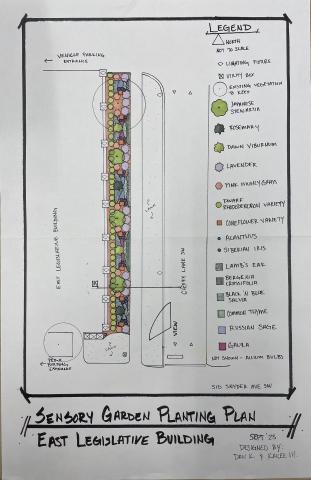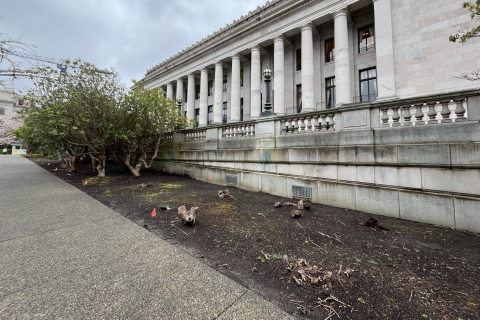New garden to grace east side of Legislative Building

DES is replacing dying plants with site-appropriate trees, flowers, shrubs.
What:
DES is installing a pollinator-friendly sensory garden. A sensory garden is a place for sight, sound, touch, and feel. It helps people of all ages and abilities to experience nature through their senses.
Where:
East side of the Legislative Building, along Cherry Lane.
When:
Work takes place Wednesday, May 28 through Monday, June 30.

Impacts:
Expect occasional noise and temporary closures of Cherry Lane and the sidewalk running along the garden area.
Why:
After 90 plus years of service, the rhododendrons growing in this area have reached the end of their useful lives. Nearly half have failed, and the ones that remain are in decline.
This installation upholds the landscape design principles set forth by the historic Olmsted Brothers firm in 1928, by:
- Opening up sightlines between the Legislative Building and other campus nodes, including the recently completed Irving R. Newhouse Building.
- Rightsizing plantings in proportion to the building’s eastern esplanade.
- Restoring balance between natural and built elements.

State law requires that public works projects devote at least 25 percent of the planted area to pollinator habitat. A diverse array of dwarf shrubs and perennials will attract birds, bees, and other pollinators to the area, providing year-round interest to visitors.
Learn more
Learn about the historic Olmsted Brothers' design principles.
Visit our other gardens:
For more information
Email Campus Horticulturist and Grounds Property Manager Brent Chapman, PhD or call 360-972-0753.
Contact Us
DES Communications
communications@des.wa.gov
360-407-8200

